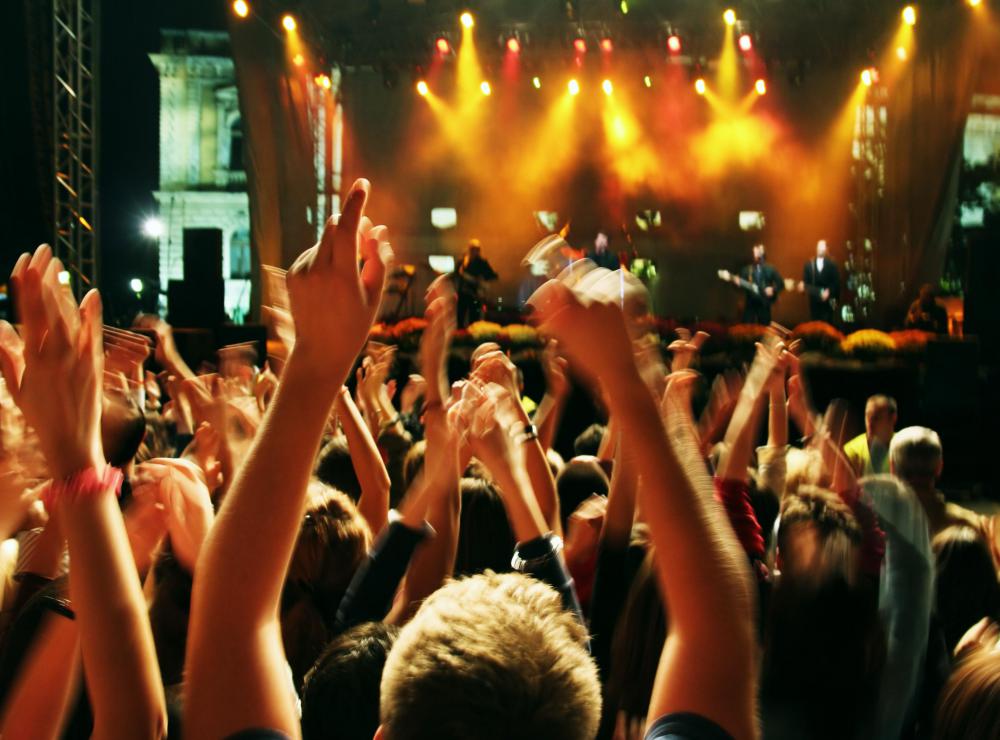At WiseGEEK, we're committed to delivering accurate, trustworthy information. Our expert-authored content is rigorously fact-checked and sourced from credible authorities. Discover how we uphold the highest standards in providing you with reliable knowledge.
What is a Wireless DMX System?
A wireless DMX system is used to transmit lighting data without the use of traditional wireline DMX cables. The systems are used by theme parks, theatrical companies and event companies that rely on large scale lighting effects. Data is sent across Wi-Fi radio links to control when certain lights are powered on and off. In this way, a wireless DMX system helps to create the illusion of lighting animation.
There are several methods in which a wireless DMX system might transmit data to lighting fixtures. Some of the technology behind these methods is remarkably similar to the use of wireless communications in the cell phone industry. For example, time division multiple access (TDMA) is one of the ways in which communication occurs between a wireless DMX receiver and transmitter. TDMA technology allows a portion of the radio spectrum to be used simultaneously by multiple devices, which increases capacity and functionality.

These systems are largely designed by the user since each DMX unit has the capability of being set up as either a transmitter or a receiver. "Point-to-point," "point-to-multipoint," or "multipoint-to-multipoint" configurations are possible. For example, a row of stage lights might be set up to receive data transmissions from a single receiver in a "point-to-point" design. A second row of lights above the stage may be set up to be controlled by the same transmitter that controls the first row in a "point-to-multipoint" configuration.

Wireless DMX systems operate using a computerized communication network. Multiple networks might be set up and designed for larger scale lighting displays or a single intranet design could work better in a smaller display situation. Data is transmitted quickly to lighting that is in poorly accessible locations such as the top of tall buildings. The technology makes entertaining and decorative lighting more convenient with mobile platforms like carnival floats or moving stage sets.
Concert halls have found wireless DMX systems to be more cost-efficient since they eliminate labor and cable breakage. It is possible to install receivers on the roof of the building that are in direct communication with a receiver installed on the operating box. This technology allows operators to control the lighting from any position in the arena.
Interactive outdoor lighting displays are also made possible by wireless DMX systems. In this scenario, a control box is set up to receive text message phrase commands from the general public. Each command triggers the control box to send a different sequence of data to the light fixtures, resulting in a unique animation-type display.
AS FEATURED ON:
AS FEATURED ON:












Discussion Comments
@Helen and Jessica -- nice article!
As a designer of wireless dmx products, I'd like to contribute a couple of points.
None of the most successful wireless dmx systems use WiFi as their means of data transport. WiFi is ideal for sending email and other files between computers, where brief delays in message timing are less important than accuracy of the data.
Wireless dmx is very time critical: changes in wireless and wired lighting must appear simultaneous. Thus, wireless dmx protocols must work differently than WiFi. Various brands and products do this their own way, and most are not compatible with one another.
This is not to say that wireless dmx cannot be done with WiFi -- it certainly can. But using this method is much more susceptible to unpredictable variations in performance, as available bandwidth is shared between multiple users, applications, and networks. The same equipment may work well one day, or at certain times of day, but be sluggish at other times. Proprietary wireless dmx avoids this by avoiding the WiFi protocol.
Just thought my fellow geeks might like to know! Thanks,
James S.
Post your comments